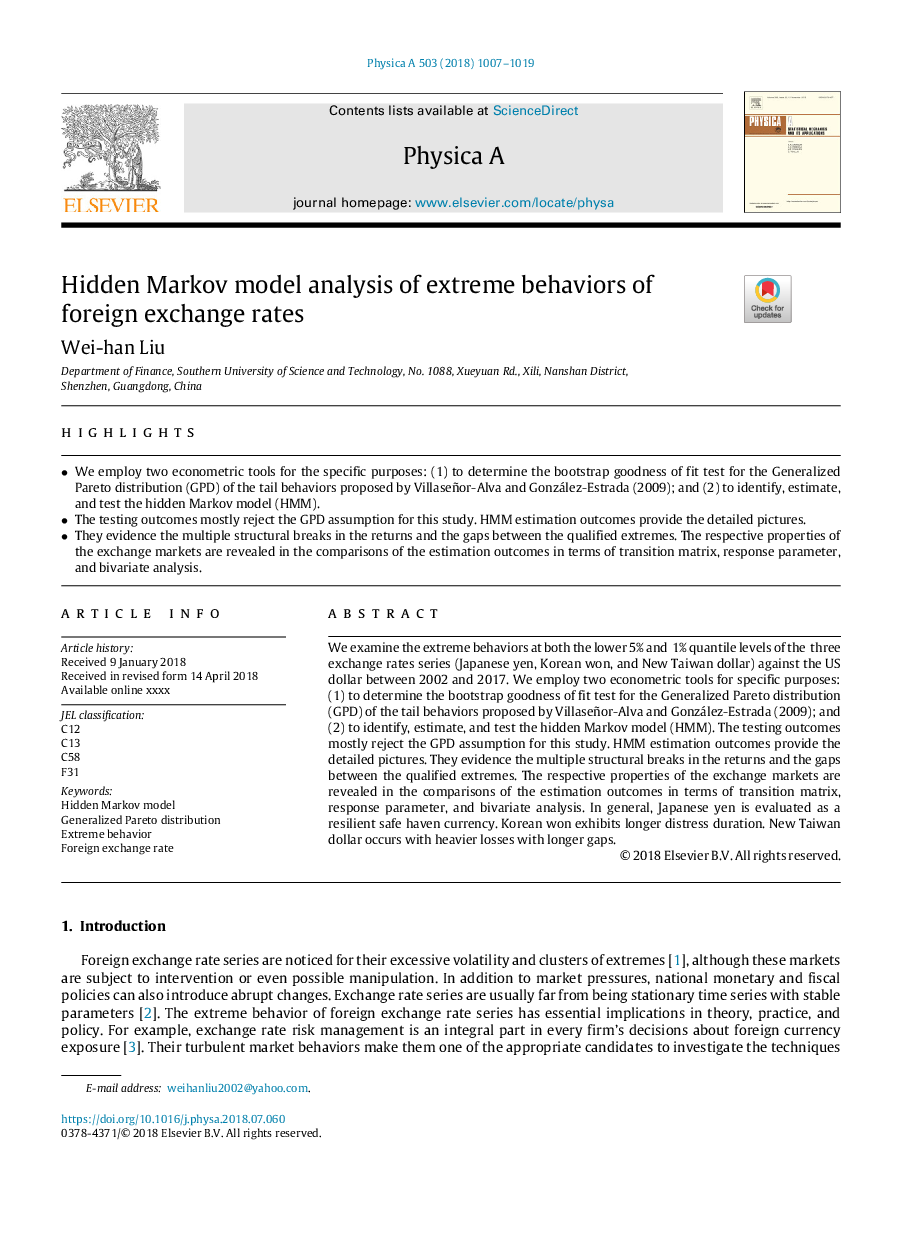| Article ID | Journal | Published Year | Pages | File Type |
|---|---|---|---|---|
| 7375345 | Physica A: Statistical Mechanics and its Applications | 2018 | 13 Pages |
Abstract
We examine the extreme behaviors at both the lower 5% and 1% quantile levels of the three exchange rates series (Japanese yen, Korean won, and New Taiwan dollar) against the US dollar between 2002 and 2017. We employ two econometric tools for specific purposes: (1) to determine the bootstrap goodness of fit test for the Generalized Pareto distribution (GPD) of the tail behaviors proposed by Villaseñor-Alva and González-Estrada (2009); and (2) to identify, estimate, and test the hidden Markov model (HMM). The testing outcomes mostly reject the GPD assumption for this study. HMM estimation outcomes provide the detailed pictures. They evidence the multiple structural breaks in the returns and the gaps between the qualified extremes. The respective properties of the exchange markets are revealed in the comparisons of the estimation outcomes in terms of transition matrix, response parameter, and bivariate analysis. In general, Japanese yen is evaluated as a resilient safe haven currency. Korean won exhibits longer distress duration. New Taiwan dollar occurs with heavier losses with longer gaps.
Related Topics
Physical Sciences and Engineering
Mathematics
Mathematical Physics
Authors
Wei-han Liu,
